A minimalist teahouse makes a serene addition to a Tadao Ando-designed Kyoto hotel
Ogata at The Shinmonzen is a contemporary reinterpretation of a Japanese teahouse that sells traditional blends, confectionery, crafts and fragrances
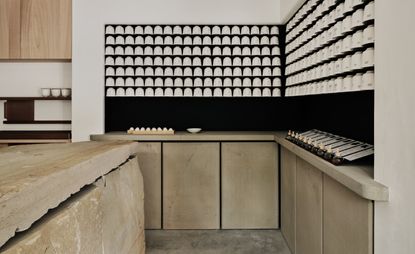
Tea and craft are markers of the coexistence between humans and nature. These elemental ingredients lie at the heart of Ogata at The Shinmonzen, a new teahouse and boutique in Kyoto that offers a contemporary reinterpretation of Japan’s traditional tea culture. The new space sits just behind the latticed façade of The Shinmonzen, an escapist, contemporary nine-suite hotel designed by Tadao Ando, on a quiet street in the Gion district.
Ogata at The Shinmonzen, Kyoto
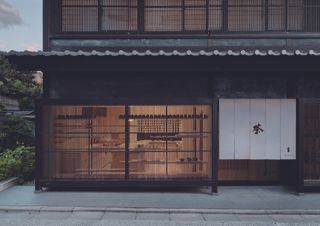
Ogata at The Shinmonzen was brought to life by Shinichiro Ogata, founder of Tokyo-based studio Simplicity, long respected for its contemporary reimaginings of Japan’s traditional culture for daily life. This one follows in the footsteps of flagship Ogata Paris, which opened four years ago with a boutique, restaurant, tea salon and gallery in a 17th-century hôtel particulier in the Marais district.
The Kyoto rendition, like the ancient city itself, is intimately scaled. Light-flooded and serenely minimalist with a natural material palette, it spans two spaces, accessed via a street-level entrance cut into the hotel’s wooden façade. The left side is all about tea and confectionery, the former prepared at a central stone counter, where crafted traditional wagashi sweets are served. On the right is a curation of crafted objects, including teapots, tea cups and Yoka fragrance – layered blends of natural ingredients ground with a traditional mortar, so, unlike incense, the scent fills the air without being burnt or heated.

Hoping to ‘propose a way of being that embodies the coexistence of people with nature’, Ogata says, ‘the space is a creative expression of this: two parallel rooms existing in symbiosis. The left section, where Japanese tea and sweets are featured, is raw and natural. The right side, where the objects for daily living are placed, is more structured. Decked with an almost latticework series of shelves, it is a homage to the city of Kyoto and its grid pattern streets.’
The materials and atmosphere are anchored in Japan’s tea culture – as reflected in the standing counter, its raw organic lines hewn from stone sourced from Kyushu, a southern island with a rich tea heritage. ‘Carved out of the earth so as to enhance nature’s etchings, it is very much the gathering place, where the guests are greeted, tea is brewed, objects wrapped,’ explains Ogata.
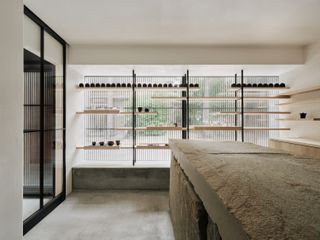
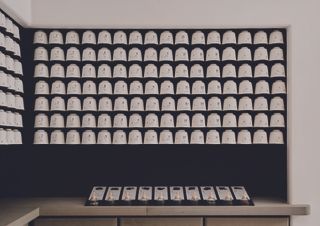
Ten bespoke Japanese tea blends, neatly lined up, are packaged in organic white vessels, crafted from biodegradable bamboo and bagasse – to which boiling water can be directly added, either for an on-the-spot counter tea or to take home. These include tea No.1, a refreshing blend of sencha, yuzu peel and kuromoji twigs, recommended to ‘invigorate and start the day fresh’.
‘I created ten blends in pursuit of the possibilities of Japanese tea for people around the world to enjoy in their daily lives,’ says Ogata, who is opening a third outpost at Château la Coste in France over the coming year. ‘The blends not only reveal the myriad flavours of Japanese tea, but each was created with intention and a proposal of how to enjoy them. There are more invigorating blends to start the day, others I recommend to pair with meals, and even a tea to calm the mind in the evening.’
Wallpaper* Newsletter
Receive our daily digest of inspiration, escapism and design stories from around the world direct to your inbox.

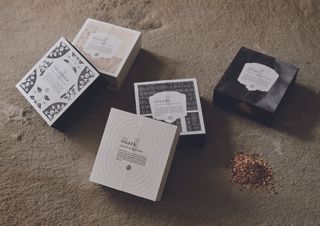
He adds: ‘Many people associate Japanese tea with the tea ceremony, and the many rules associated with it, which can be rather daunting. However, this is only a fraction of the Japanese tea culture; it is also very much an everyday beverage with hundreds of varieties enjoyed across regional Japan.’
For Ogata, the words ‘natural’, ‘dignified’ and ‘of the present’ best sum up the atmosphere of the new spaces. ‘Not only is natural tea beneficial to our health, but more importantly, it brings people together around a common experience. The simple act of adding water to leaves is not bound by culture or religion; with just a few minutes, tea can facilitate this human necessity of slowing down and being together. Through making Japanese tea more accessible to the world, I hope to bring back these simple daily rituals into our hectic lives.’
Find Ogata at The Shinmonzen, Shinmonzen-dori, 235 Nishinocho, Higashiyama Ward, Kyoto, 605-0088, Japan, theshinmonzen.com
This article appears in the October 2024 issue of Wallpaper*, available in print on newsstands from 5 September on the Wallpaper* app on Apple iOS, and to subscribers of Apple News +. Subscribe to Wallpaper* today.
Danielle Demetriou is a British writer and editor who moved from London to Japan in 2007. She writes about design, architecture and culture (for newspapers, magazines and books) and lives in an old machiya townhouse in Kyoto.
Instagram - @danielleinjapan
-
 ‘The world doesn’t necessarily need any more chairs’ and other design quotes to take into 2025
‘The world doesn’t necessarily need any more chairs’ and other design quotes to take into 2025From Faye Toogood on pushing down barriers to Michael Bennett on Black design – we celebrate highlights from the past year of Wallpaper* interviews with design industry trailblazers
By Tianna Williams Published
-
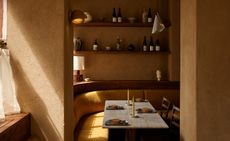 Fine dining is plant-powered at this intimate east London restaurant
Fine dining is plant-powered at this intimate east London restaurantChef Kirk Haworth’s Plates thrives in its synergetic dialogue between people, nature and ingredients
By Sofia de la Cruz Published
-
 New wave: 11 electric boats for a nautical New Year
New wave: 11 electric boats for a nautical New YearFrom cutting-edge electric hydrofoils to elegant speedboats, here are some of the newest innovations to take to the waves
By Jonathan Bell Published
-
 2025 getaways: where Wallpaper* editors will be travelling to this year
2025 getaways: where Wallpaper* editors will be travelling to this yearFrom the Japanese art islands of Naoshima and Teshima to the Malaysian tropical paradise of Langkawi, here’s where Wallpaper* editors plan to travel to in 2025
By Sofia de la Cruz Published
-
 The most whimsical hotel Christmas trees around the world
The most whimsical hotel Christmas trees around the worldWe round up the best hotel Christmas tree collaborations of the year, from an abstract take in Madrid to a heritage-rooted installation in Amsterdam
By Tianna Williams Published
-
 Six brilliant bars for your 2025 celebrations, hot off the Wallpaper* travel desk
Six brilliant bars for your 2025 celebrations, hot off the Wallpaper* travel deskWallpaper’s most-read bar reviews of the year can't be wrong: here’s inspiration for your festive and new year plans, from a swanky Las Vegas lounge to a minimalist London drinking den
By Sofia de la Cruz Published
-
 Wallpaper* checks in at Yoruya, a Japanese inn where less is always more
Wallpaper* checks in at Yoruya, a Japanese inn where less is always moreYoruya, which transforms a 110-year-old former kimono merchant shopfront and residence in Kurashiki, is an exercise in graceful restraint and craft
By Joanna Kawecki Published
-
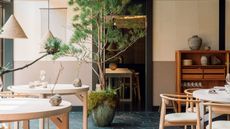 First look: Noma Kyoto returns and aims to ‘double-wow’ diners
First look: Noma Kyoto returns and aims to ‘double-wow’ dinersNoma Kyoto opens on 8 October for a ten-week pop-up inside Ace Kyoto. Thomas Lykke, co-founder of OEO Studio, tells us of the interiors’ autumn-forest inspiration
By Danielle Demetriou Published
-
 Kengo Kuma’s new Kyoto hotel is ‘a sanctuary of ethereal beauty’
Kengo Kuma’s new Kyoto hotel is ‘a sanctuary of ethereal beauty’A former ryokan inn, Banyan Tree Higashiyama Kyoto offers onsen rooms equipped with natural hot spring water, and a contemporary take on a Noh theatre
By Danielle Demetriou Published
-
 Tour the new Four Seasons Osaka, where time stands still
Tour the new Four Seasons Osaka, where time stands stillSet within a 49-storey tower, Four Seasons Osaka takes the traditional ryokan experience to new heights
By Danielle Demetriou Published
-
 Aman Residences Tokyo float high above the Japanese capital
Aman Residences Tokyo float high above the Japanese capitalAman Residences Tokyo, Aman Group’s first standalone branded residences, feature dramatic yet serene interiors by Yabu Pushelberg
By Dan Howarth Published